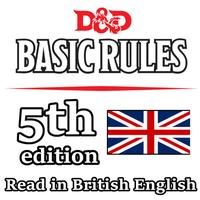Advantage and Disadvantage, Specific Beats General and Round Down
Advantage and Disadvantage.
Sometimes an ability check, attack roll, or saving throw is modified by special situations called advantage and disadvantage. Advantage reflects the positive circumstances surrounding a d20 roll, while disadvantage reflects the opposite. When you have either advantage or disadvantage, you roll a second d20 when you make the roll. Use the higher of the two rolls if you have advantage, and use the lower roll if you have disadvantage. For example, if you have disadvantage and roll a 17 and a 5, you use the 5. If you instead have advantage and roll those numbers, you use the 17.
More detailed rules for advantage and disadvantage are presented in chapter 7.
Specific Beats General.
This book contains rules, especially in parts 2 and 3, that govern how the game plays. That said, many racial traits, class features, spells, magic items, monster abilities, and other game elements break the general rules in some way, creating an exception to how the rest of the game works. Remember this: If a specific rule contradicts a general rule, the specific rule wins.
Exceptions to the rules are often minor. For instance, many adventurers don't have proficiency with longbows, but every wood elf does because of a racial trait. That trait creates a minor exception in the game. Other examples of rule-breaking are more conspicuous. For instance, an adventurer can't normally pass through walls, but some spells make that possible. Magic accounts for most of the major exceptions to the rules.
Round Down.
There's one more general rule you need to know at the outset. Whenever you divide a number in the game, round down if you end up with a fraction, even if the fraction is one-half or greater.

